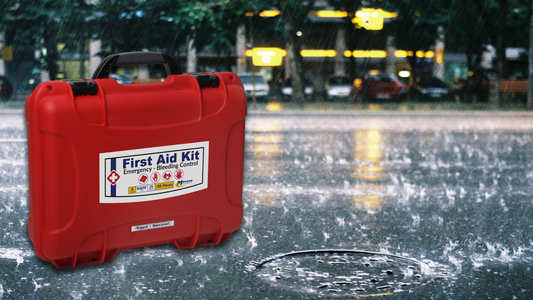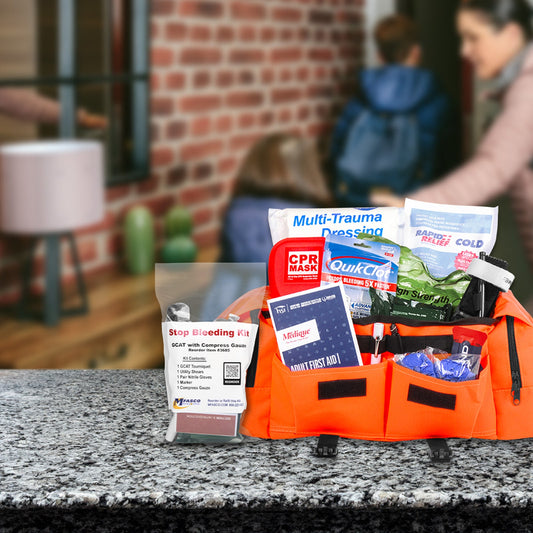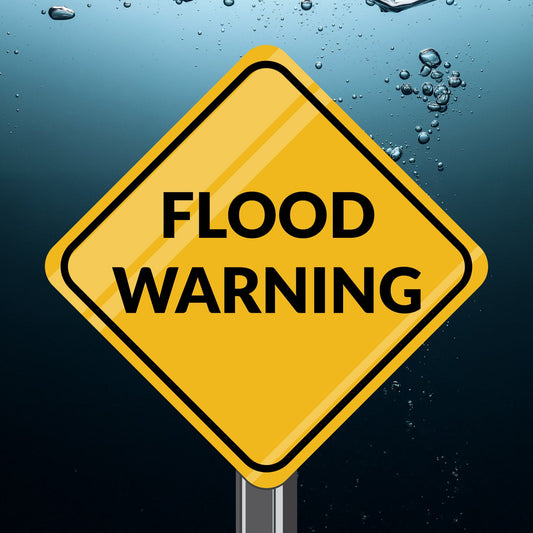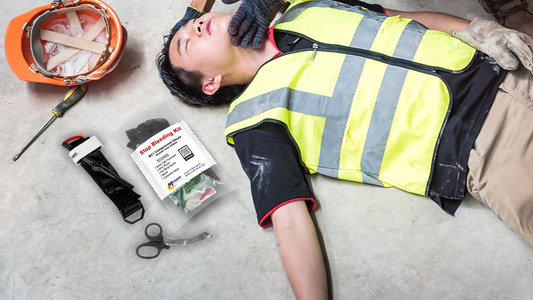The Basics of Bleeding Control
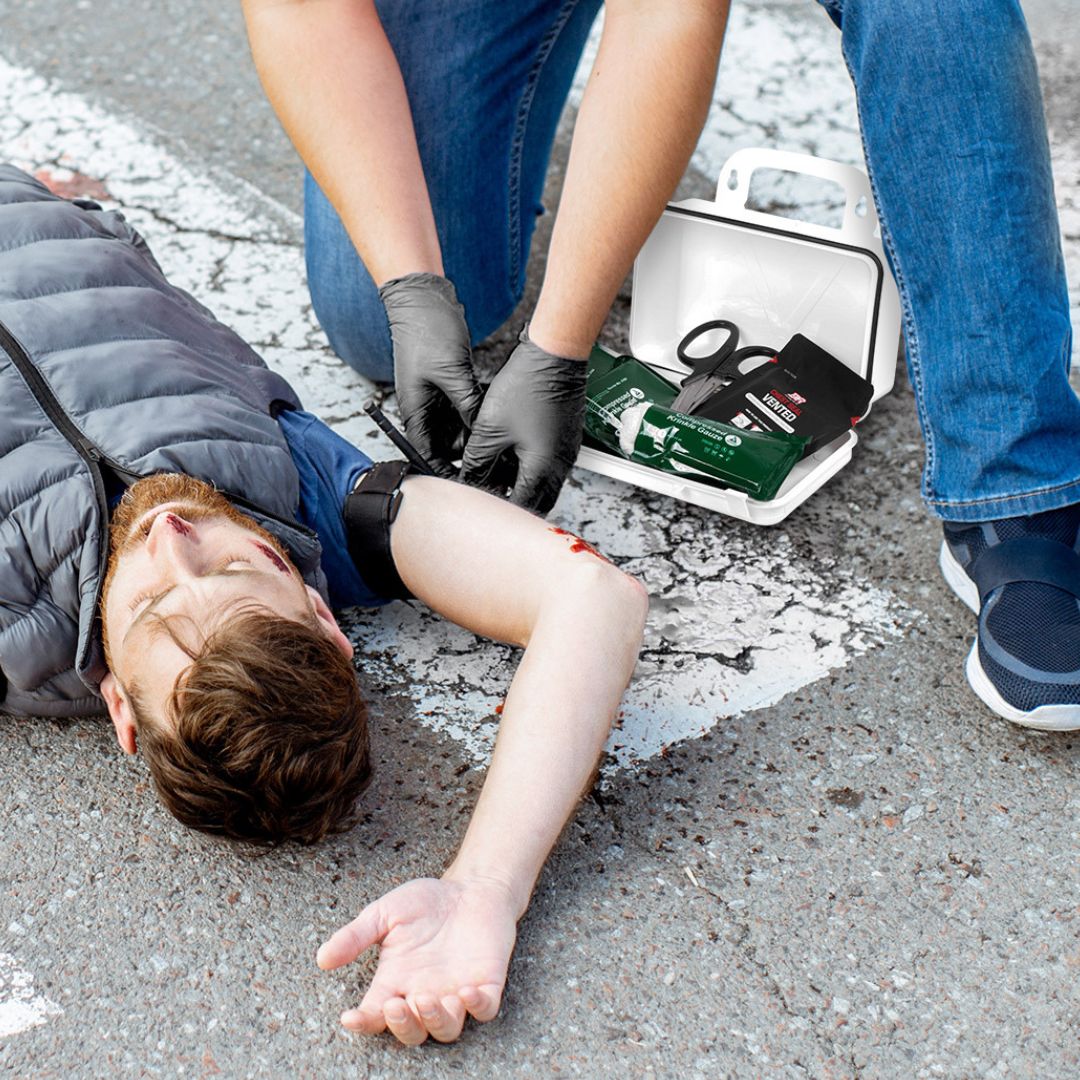
In emergencies, controlling bleeding can make the difference between life and death. Bleeding control is a critical skill that everyone should understand. This guide aims to provide a comprehensive overview of bleeding control techniques and the right first aid kit supplies you’ll need, equipping you with the knowledge necessary to manage bleeding effectively until professional help arrives.
Why Bleeding Control is Crucial
When it comes to emergencies, controlling bleeding promptly is paramount. Uncontrolled bleeding can lead to shock and, if not addressed quickly, can be fatal. Statistics show that effective bleeding control can significantly reduce deaths caused by traumatic injuries. Quick actions and proper bleeding control techniques with the right supplies have saved lives.
Must-Have Tools for Effective Bleeding Control
Bandages and Dressings
Having a variety of bandages and dressings in your first aid kit is essential. These include adhesive bandages for minor cuts, gauze pads for larger wounds, and roller bandages for securing dressings.
Hemostatic Dressings and Agents
Hemostatic agents are substances that help blood clot more quickly. These can be in the form of powders, dressings, or gauze and are particularly useful in severe bleeding situations. Cutcure helps stop bleeding in seconds. After applying the product on the wound, within 30-60 seconds, clotting begins.
Check out our hemostatic dressing that also helps stop bleeding quickly.
Tourniquets
A good-quality tourniquet should be part of every first-aid kit. Look for models that are easy to apply and designed for emergency use.
Check out our orange tourniquets for easy identification and our military style tourniquets.
Gloves and PPE
Personal protective equipment, such as gloves, is crucial for preventing infection when treating wounds. Always use gloves when administering first aid to protect both yourself and the injured person.
Key Techniques for Effective Bleeding Control
Direct Pressure
One of the most effective methods to control bleeding is applying direct pressure to the wound. Use a clean cloth or bandage and press firmly on the site of the injury. This helps to compress the blood vessels and slow down the bleeding.
Tourniquets
Tourniquets are used as a last resort when other methods fail. They should be applied above the wound, between the injury and the heart, to restrict blood flow. It's important to use a tourniquet correctly to avoid further injury, and training on proper application is highly recommended.
Preparing Yourself: Training and Practice
First Aid Courses
Taking a first aid course that includes bleeding control techniques is one of the best ways to prepare yourself for emergencies. Many organizations offer courses that cover the basics and advanced techniques of first aid and bleeding control.
Practical Drills
Regularly practicing bleeding control techniques ensures you stay prepared. Simulated scenarios can boost your confidence and ensure that you can act quickly and effectively when needed. Only do this under the supervision and guidance of a trained instructor who can help you learn the correct techniques.
Resources
Numerous resources are available for learning bleeding control. Websites, videos, and manuals from reputable organizations can provide valuable information and training materials.
Common Myths About Bleeding Control
Myth 1: Leaning Back or Elevating Legs
One common myth is that leaning back or elevating the legs can always help in controlling bleeding. While these methods might be useful in certain situations, they are not a substitute for direct pressure and other proven bleeding control techniques. It’s important to use specific first aid techniques for bleeding control.
Myth 2: Makeshift Tourniquets
Another misconception is that makeshift tourniquets made from belts or other items are effective. In reality, these can cause more harm than good if not applied correctly. It's essential to use a proper tourniquet designed for emergencies along with getting the proper training on how to use it.
Stay Prepared and Informed with MFASCO
Understanding and practicing bleeding control is a crucial skill for everyone. By familiarizing yourself with the key techniques, ensuring you have the right bleeding control first aid kit supplies, and keeping up to date with training, you can be prepared to handle emergencies confidently. Remember, effective bleeding control can make the difference in saving a life. Equip yourself with knowledge, stock up on the best first aid supplies, and be ready to act when seconds count.
Contributing Expert

Mike Brinker
Mike Brinker has been working in the first aid industry for over 35 years. He has worked with thousands of businesses,groups, and organizations to provide a healthy and safe work environment. Mike helped create “Make-A-Kit”, the internet's only online first aid kit creation tool. He has also authored many helpful first-aid and safety-related resource articles found at the MFASCO Learning Center.

